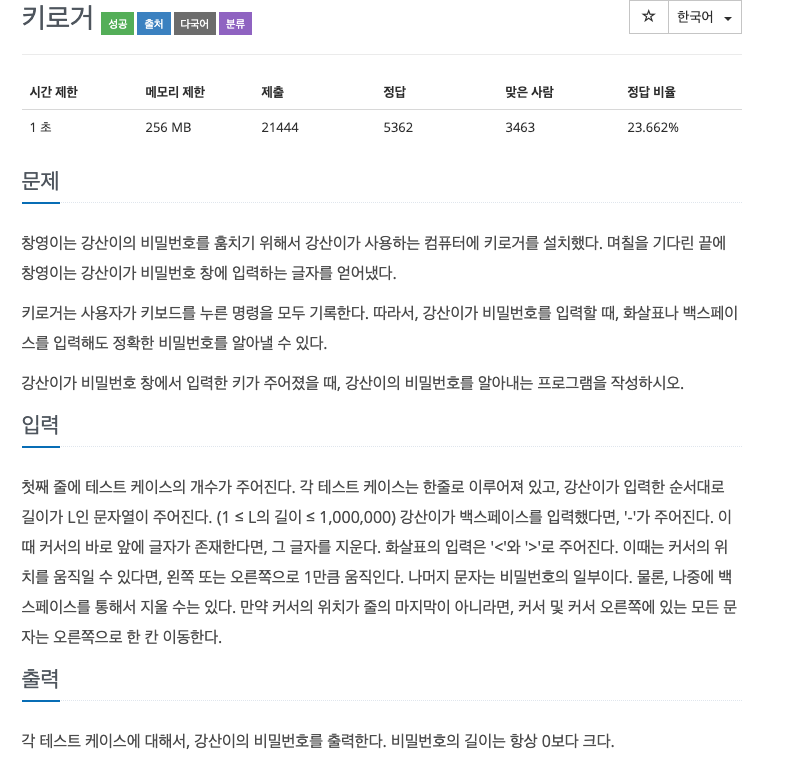#include <iostream>
#include <list>
using namespace std;
int main()
{
ios::sync_with_stdio(0);
cin.tie(0);
int N;
cin >> N;
while(N--)
{
list<char> L;
list<char>::iterator cursor=L.begin();
string S;
cin >> S;
for(auto a : S)
{
switch(a)
{
case '-':
{
if(cursor != L.begin())
{
cursor = L.erase(--cursor);
}
break;
}
case '<':
{
if(cursor != L.begin())
cursor--;
break;
}
case '>':
{
if(cursor != L.end())
cursor++;
break;
}
default :
{
L.insert(cursor,a);
break;
}
}
}
for(auto a : L)
cout << a ;
cout <<'\n';
}
}
- cursor = L.begin(); -> L.insert(cursor, 3) 하게되면
it는 L.end()와 같은 위치에 있다.
- cursor = L.erase(cursor)
삭제 후 cursor의 값을 바꿔주지 않으면 cursor는 삭제된 값을 가지고 있다! 왜그러냐;
- list.end()는 마지막 요소 다음을 가리킨다!(빈 곳)

